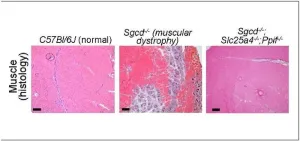(Press-News.org) Imagine a computer that is not slowed down by antivirus software. A computer that does not require constant updates that usually includes a subscription cost. What if malicious software and viruses – or malware – detection could simply be built into the hardware of future computers?
Dr. Marcus Botacin, a visiting assistant professor in the computer science and engineering department at Texas A&M University, recently received a grant from the National Science Foundation (NSF) to develop such a concept.
“This is my first grant application ever,” Botacin said. “This grant includes funding for two Ph.D. students that will be my first graduate students, and it is the basis for everything that we will be building here.”
The over $500,000 grant will help fund Botacin’s laboratory for three years. During that time, he will work to move malware detection from software to hardware, expanding on existing technology. The idea of using hardware to detect malware quicker has been around for about 10 years, according to Botacin. However, his proposal would be the “first formal scientific treatment of the problem.”
A Proof of Concept
The project, Next Generation Antivirus, will include establishing a framework for extending on top of existing Central Processing Unit (CPU) hardware to integrate malware detection and creating all metrics and formal materials needed for methodological evaluation. A new technology for faster, more efficient detection would require evaluations to determine if the method is practical enough without sacrificing other important operations.
Botacin plans to use a hardware emulator, which simulates hardware operations in a software application, to build the framework and find new ways that CPUs can be created and organized to include malware detection.
The storage units of a CPU, called registers, are the fastest memory in a computer. Each CPU has multiple registers, each dedicated to different operations. One of Botacin’s tasks will be determining how many registers will be needed for dedicated security.
Botacin hopes to achieve fast, robust and reliable malware detection without sacrificing speed or performance in other computer processes.
“An important aspect of my research is that I try to make stuff practical, innovative, but practical,” Botacin said. “I try to build on what’s already existing, but can be adapted and enhanced for other purposes, like security.”
The Arms Race Between Malware and Security
The numerous types of malware like viruses, worms, adware and ransomware continue to evolve into more sophisticated versions of attacking computers and networks. The cybersecurity industry, which includes many large antivirus software companies, is constantly developing answers to these attacks. This ongoing arms race requires even the most robust antivirus software to be updated almost daily. Like any war, there are preemptive and reactive strikes from both sides.
If Botacin’s research comes to fruition in future computers, it could be a significant step in bolstering the security side and saving time and resources. The new hardware would work by making a profile of the computer and its systems under normal usage conditions. At about one profile per second, this would create an evolving baseline that the security hardware could then compare to incoming potential threats.
“I’m doing something called a time series,” Botacin said. “That’s why I need hardware because it needs to do this profile very fast.”
“This three-year period I will be doing multiple approaches to the problem that includes building the defensive mechanisms and evaluating them,” Botacin added. To evaluate the mechanisms, he “will develop attacks to the prototypes and develop robustness testing.”
The potential final product of this work would be the hardware simulation code and evaluation metrics. Release of the code will allow anyone to download and replicate the experiment and hardware fabrication could soon follow.
By Justin Agan, Texas A&M Engineering
END
Innovative approach: Detecting malware through hardware-integrated protection
A Texas A&M University engineering scientist was awarded a National Science Foundation grant to develop a new method of using hardware to detect malicious software on future computers.
2023-08-25
ELSE PRESS RELEASES FROM THIS DATE:
Two new projects bring health care to vulnerable groups
2023-08-25
Nansi Boghossian and Melissa Nolan, both associate professors in the Arnold School’s Department of Epidemiology and Biostatistics, have been awarded more than $600K each from The Duke Endowment to lead projects that improve access to health care for underserved populations. Their projects align with the Endowment’s goals to provide essential health care services, particularly for children and families, to residents of the Carolinas.
“To truly achieve health for all, we must develop and test innovative yet practical ...
UC economist finds strong link between park funding, home values
2023-08-25
Ohio residents who vote against tax renewals for parks and recreation spending could be costing themselves a significant amount of wealth in the form of their homes' value, a University of Cincinnati economist found.
David Brasington, PhD, the James C. and Caroline Kautz Chair in Political Economy and professor of economics in UC's Carl H. Lindner College of Business, studied the effect of cutting funding for the maintenance of local parks and recreational areas on housing values for a research article that was published in Journal ...
Is hip replacement safe for people in their 90s? Risks depend on patients' health as well as age
2023-08-25
August 25, 2023 – Potentially modifiable comorbid conditions and complications have a major impact on the risks of total hip arthroplasty (THA) for people in their nineties, reports a study in The Journal of Bone & Joint Surgery. The journal is published in the Lippincott portfolio in partnership with Wolters Kluwer.
Patients ³90 years old have higher complication and mortality rates following THA, as compared with younger patients. But while age is a significant factor, the risks associated with THA in nonagenarians ...
SLU research: Erectile dysfunction linked to undiagnosed prediabetes, type 2 diabetes in young men
2023-08-25
ST. LOUIS — Erectile dysfunction (ED) is more common in older individuals with long-term Type 2 diabetes. However, emerging research at Saint Louis University School of Medicine has found that ED indicates undiagnosed prediabetes and type 2 diabetes in young men under 40.
Although the prevalence of undiagnosed diabetes declined in the United States from 1988 to 2020, 2.5% of the population has persistent undiagnosed diabetes. The Centers for Disease Control and Prevention estimate 8.5 million adults have undiagnosed diabetes, and a quarter of these cases are among young persons 18 to 44.
In a recent study published ...
Children with SEND deserve authentic inclusion in the foreign languages classroom, report warns
2023-08-25
Pupils with special educational needs and disabilities should be given equal opportunities to learn languages, a new report argues.
Anecdotal evidence suggests that children with SEND are often removed from language lessons, because the subject is perceived as “difficult”, an assumption that is further exacerbated by trends with GCSE subject choices. Instead of withdrawing children with additional needs from the foreign languages classroom, opportunities should be provided for them to thrive within it.
Evidence shows learning new languages can be possible and hugely beneficial for many children with ...
New guideline details dental pain management strategies for pediatric patients
2023-08-25
CHICAGO, Aug. 25, 2023 – Acetaminophen or non-steroidal anti-inflammatory drugs (NSAIDs) like ibuprofen are recommended as first-line treatments for managing short-term dental pain in children under age 12, according to a new clinical practice guideline developed by the American Dental Association Science & Research Institute (ADASRI), the University of Pittsburgh School of Dental Medicine and the Center for Integrative Global Oral Health at the University of Pennsylvania School of Dental Medicine. The guideline has been endorsed by the American Dental Association.
A guideline panel determined that, when used as directed, acetaminophen alone, ...
In Type 1 diabetes, verapamil prevents decline of IGF-1 and promotes beta-cell IGF-1 signaling
2023-08-25
BIRMINGHAM, Ala. – In 2012, University of Alabama at Birmingham researcher Anath Shalev, M.D., reported that a decades-old blood pressure medication called verapamil completely reversed diabetes in animal models. In 2018, the team had translated these findings into a randomized, controlled, clinical trial, demonstrating significantly improved beta cell function for one year in human subjects with recent onset Type 1 diabetes. By last year, in a small follow-up study, Shalev and colleagues had found that adult Type 1 diabetes patients taking oral verapamil required less daily insulin ...
How being in space impairs astronauts’ immune system
2023-08-25
A new study led by researchers at Karolinska Institutet in Sweden has examined how T cells of the immune system are affected by weightlessness. The results, which are published in the journal Science Advances, could explain why astronauts’ T cells become less active and less effective at fighting infection.
The next steps in the exploration of space are human missions to the moon and to Mars. Space is an extremely hostile environment that poses threats to human health. One such threat is changes to the immune system that occur in astronauts while in space and ...
Mitochondria pore emerges as potential key to managing muscular dystrophies
2023-08-25
Ever since the Jerry Lewis telethons began in the 1960s, millions of people have become familiar with an otherwise rare disease called muscular dystrophy (MD).
The medical world has learned much over the ensuing years, including that more than 30 closely related disorders exist that can produce the gradual muscle degeneration that steals a child’s ability to walk and eventually disrupts other organ functions. An estimated 250,000 people in the U.S. are living with a muscular dystrophy. While many are living longer lives thanks to improved treatments, no cure has been found.
Now an eye-opening study ...
Unlocking the secrets of cell antennas
2023-08-25
Cilia are thin, eyelash-like extensions on the surface of cells. They perform a wide variety of functions, acting as mechanosensors or chemosensors, and play a crucial role in many signaling pathways. In the last few decades, the organelle has undergone a remarkable, but at the same time sinister, career transformation. It evolved from an organelle whose relevance was unclear to becoming a central player in the pathogenesis of a large group of diseases. These so-called ciliopathies are associated with a wide range of symptoms, including hearing loss, visual impairment, obesity, kidney disease, and mental disability. Different gene mutations impair cilia formation, ...
LAST 30 PRESS RELEASES:
The Ceramic Society of Japan’s Oxoate Ceramics Research Association launches new international book project
Heart-brain connection: international study reveals the role of the vagus nerve in keeping the heart young
Researchers identify Rb1 as a predictive biomarker for a new therapeutic strategy in some breast cancers
Survey reveals ethical gaps slowing AI adoption in pediatric surgery
Stimulant ADHD medications work differently than thought
AI overestimates how smart people are, according to HSE economists
HSE researchers create genome-wide map of quadruplexes
Scientists boost cell "powerhouses" to burn more calories
Automatic label checking: The missing step in making reliable medical AI
Low daily alcohol intake linked to 50% heightened mouth cancer risk in India
American Meteorological Society announces Rick Spinrad as 2026 President-Elect
Biomass-based carbon capture spotlighted in newly released global climate webinar recording
Illuminating invisible nano pollutants: advanced bioimaging tracks the full journey of emerging nanoscale contaminants in living systems
How does age affect recovery from spinal cord injury?
Novel AI tool offers prognosis for patients with head and neck cancer
Fathers’ microplastic exposure tied to their children’s metabolic problems
Research validates laboratory model for studying high-grade serous ovarian cancer
SIR 2026 delivers transformative breakthroughs in minimally invasive medicine to improve patient care
Stem Cell Reports most downloaded papers of 2025 highlight the breadth and impact of stem cell research
Oxford-led study estimates NHS spends around 3% of its primary and secondary care budget on the health impacts of heat and cold in England
A researcher’s long quest leads to a smart composite breakthrough
Urban wild bees act as “microbial sensors” of city health.
New study finds where you live affects recovery after a hip fracture
Forecasting the impact of fully automated vehicle adoption on US road traffic injuries
Alcohol-related hospitalizations from 2016 to 2022
Semaglutide and hospitalizations in patients with obesity and established cardiovascular disease
Researchers ‘listen in’ to embryo-mother interactions during implantation using a culture system replicating the womb lining
How changing your diet could help save the world
How to make AI truly scalable and reliable for real-time traffic assignment?
Beyond fragmented markets: A new framework for efficient and stable ride-pooling
[Press-News.org] Innovative approach: Detecting malware through hardware-integrated protectionA Texas A&M University engineering scientist was awarded a National Science Foundation grant to develop a new method of using hardware to detect malicious software on future computers.



